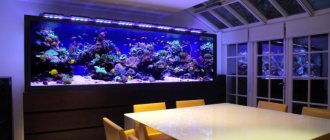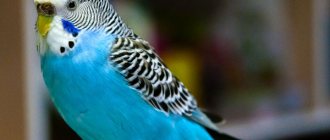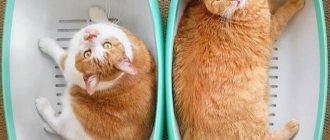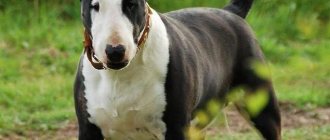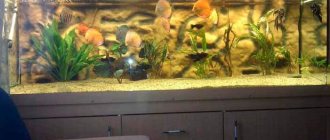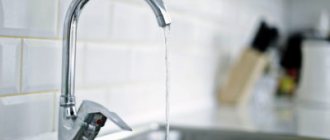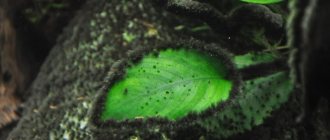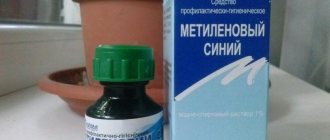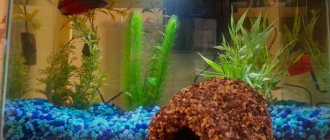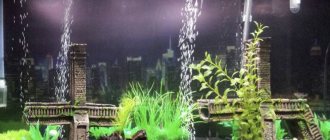An aquarium without decor and plants looks dull and does not suit its purpose at all. An artificial pond should create a calming atmosphere, attract views, and be a key element of the interior. Driftwood for an aquarium is a unique decoration that imitates living nature. The advantage of natural driftwood is that you can find and process it yourself. With the help of intricately curved and intertwined branches, roots, and whips, impressive aquatic compositions are created.
Why do you need driftwood in an aquarium?
Not only does it look great, but it also stimulates and maintains a healthy ecosystem inside the aquarium. Just like the soil and the contents of filters, driftwood serves as a medium for the development of beneficial bacteria.
These bacteria are very important for the balance in the aquarium, they help break down harmful substances into harmless components.
Driftwood helps strengthen the immune system of your fish. Flooded driftwood slowly releases tannins, which create a slightly acidic environment in which harmful bacteria and viruses develop much less easily.
Fallen leaves act in the same way, often added to the bottom of the aquarium, and which make the water in natural reservoirs the color of strong brewed tea.
If you have alkaline water, adding driftwood helps lower the pH. Most fish in nature live in slightly acidic water, and driftwood with fallen leaves in an aquarium perfectly helps to recreate such an environment.
Driftwood recreates natural conditions for fish. In almost any body of water, like a lake or river, you can always find a sunken snag. Fish use them as shelter, for spawning or even for food. For example, ancistrus need it for normal digestion; by scraping off layers from it, they stimulate the functioning of their stomach.
Purpose of using driftwood
Placing driftwood in an aquarium has not only an aesthetic purpose, but also a useful one. The tree maintains a natural balance in the aquatic microflora, which has a positive effect on the health of many fish. Snag, soil and filter contents serve as a source of necessary beneficial bacteria. They are of great importance for the balance of the aquatic environment because they participate in the decomposition of harmful elements into safe components.
The tree helps in strengthening the immunity of the fish, because the driftwood, placed in water, gradually begins to release tanning components , forming a slightly acidic environment in which bacteria and viruses do not live for a long time. Many aquarium owners add fallen leaves to the bottom to disinfect the water.
The leaves turn the color of the water dark brown. If the aquarium has an alkaline environment, then the placed driftwood lowers the pH of the liquid.
Under natural conditions, fish are accustomed to living in a slightly acidic aquatic environment, so adding fallen leaves and driftwood to the container has a positive effect on the health of aquarium inhabitants.
In addition to decoration, wood in aquariums is used to strengthen the immunity of fish in the aquarium.
Tree branches help create a natural environment for pets.
Driftwood can be found in any lake, pond or river. Often such objects are used by fish as shelter from predators, for feeding or spawning. Aquarium driftwood is used by ancistrus (a type of catfish):
- For good digestion of food.
- To eat the salts formed on the tree to restore the proper functioning of the digestive tract.
Purchasing wooden decor
Parts of wood suitable for decorating an aquarium can be found anywhere: in a park, forest, yard, at the bottom of a natural reservoir, or bought at the market, in a special store for animals. But when choosing decor, it is taken into account that not all tree species are suitable. For example, it is undesirable to use conifers - pine or cedar. They can be processed, but it will take 4 times longer, and there will be a risk that the wood was processed poorly and not completely.
Deciduous trees are best suited: maple, pear, grape, beech, oak, willow, apple tree. The most common decorations among hobby aquarists are made of oak and willow. If soft wood species are used for decoration, they quickly disintegrate in water. Such driftwood will last only 2 years.
It is best to choose branches of deciduous trees for an aquarium.
You can choose those trees that do not grow in Russia: ironwood, mangrove, mopane, etc. Such decorative elements are strong and will last a long time, but they have a significant drawback: the water after such snags is stained. Even prolonged soaking will not prevent this side effect.
What you need to do to prepare driftwood for an aquarium yourself:
- If there is rot or fungi on the tree, they are carefully removed.
- The bark is removed, because if this is not done, then over time it will fall off when soaked in water and ruin the whole appearance.
- Leaving rot on a tree threatens the death of aquatic life.
If the wood has a strong bark that is difficult to remove, then the driftwood should be soaked in water for 12 hours and then boiled. This will help remove the bark without problems.
Application of living branches
The use of live branches is prohibited. To make a driftwood for an aquarium with your own hands, only dry branches or tree trunks are suitable. A branch that catches your eye in the yard for decoration is cut off and dried in a well-ventilated area. If the decoration is prepared in the summer, it is better to dry it in the sun - this will prevent rotting, and pathogenic microbes will die under the ultraviolet rays of the sun.
Decorating an aquarium with driftwood depends on the taste of the owner of the home “reservoir”. Large and textured decorative elements look most beautiful. Aqua designers often use tree roots, as they have a beautiful three-dimensional shape, they can be placed on the bottom to your liking, all branches lead from a single point, which is very convenient when placed in a tank.
Living branches in the aquarium will begin to rot, which will have a bad effect on the health of the fish.
If you have no experience in decorating an aquarium with driftwood, then you can get confused about how best to place the decoration. In addition to wood, plants, bamboo and stones are used for decoration. If the owner of an aquarium wants to better decorate the tank, then you need to take a closer look at how natural decorations are located in lakes or reservoirs. Often it is the natural design of the fish’s place of residence that looks most advantageous and impressive.
Wood processing
How to process driftwood for an aquarium is the next task for the aquarist. Water is sensitive to the slightest changes; accordingly, all manipulations must be carried out carefully so as not to harm the health of aquatic inhabitants.
In addition to preliminary cleaning of the bark, the tree is boiled. This is required for the following:
- All pathogenic microbes, bacteria and insects that are in the pores of the tree are killed.
- During cooking, various substances are released.
- Dry decorative elements will float and will need to be further secured. To prevent this from happening, the wood is boiled with salt, after which it will become heavy and will sink on its own.
It is important to boil the driftwood properly. To do this, prepare an iron pan or bucket of the required size in advance. A solution of 1 liter of water and 400 g of salt is made in a container.
Before immersing driftwood in an aquarium, you should boil it in a special solution.
To prepare the wood, it must be boiled for 10 hours. Water evaporates quickly during cooking, so its volume needs to be controlled and liquid added if necessary.
From time to time it is checked whether the tree is sinking or not. If not, then cooking continues.
If the decor is borrowed from a natural reservoir, then no salt is added during cooking, because the wood already sinks on its own. Even if the wood for decoration was purchased at a pet store, it still needs to be boiled. You cannot take branches that are intended for reptiles, because they have been treated with fungicides, which will negatively affect the health of the fish.
What driftwood can I use? Which ones are suitable for an aquarium?
The first thing you need to know: snags from coniferous trees (pine, cedar) are highly undesirable to use in an aquarium. Yes, they can be processed, but it will take 3-4 times longer and there will be a risk that they are not completely processed.
Second, you need to choose deciduous trees, preferably hard ones: beech, oak, willow, grapevine and grape roots, apple, pear, maple, alder, plum.
The most popular and strongest will be willow and oak driftwood. If you settle on softer rocks, they will disintegrate quite quickly and in a few years you will need a new one.
You can buy natural driftwood not from our countries: mopani, mangrove and ironwood, fortunately there is a large selection of them in stores now. They are quite hard and well preserved, but there are also disadvantages: mopani and mangrove driftwood can stain the water very strongly, so no soaking helps.
Mopani driftwood
Tree selection
You can find a suitable natural decoration in the nearest forest. You need to choose branches and roots of trees that have been in the water for a long time. Only long-dead plants can be used: freshly cut or live ones will lead to fish poisoning. Obviously, you should look for material away from highways, factories, construction sites and other industrial sources of waste and emissions of harmful substances. You can select a fragment of driftwood you like directly in the forest or at home.
Which wood is suitable
The best species are fruit trees, bog oak, bamboo, driftwood from rivers, roots and trunks of grapevines, reeds, alder, willow, elm, willow, birch, acacia, and olive. Only deciduous trees can be used. A suitable tree should be strong and hard.
Prohibited species
You cannot use coniferous trees and shrubs, as well as species containing a large amount of essential oils: juniper, pine, spruce, cedar, eucalyptus. It is strictly forbidden to pick up rotten and rotten branches that have been under fallen leaves for a long time.
How to decorate an aquarium with driftwood?
Everything here is up to your taste. As a rule, large, textured driftwood is noticeable. World-class aquatic designers most often use tree roots, since they have a rich texture and have a single growing point from which the roots emerge.
Often, when you pick up a piece of driftwood for the first time, simply twisting it, you get lost on which side it will look more beautiful. But you can also use stones, bamboo, and plants. If you do not have experience in this matter, then you can simply try to reproduce what you saw in nature, or repeat the work of some other aquarist.
Methods for disinfecting driftwood
Method No. 1. Treatment with active chlorine
The principle of operation is the same as the treatment of tap water. The already cleaned driftwood is again placed in the container, but this time chlorinated water is poured in. As bleach I use the usual 4% Whiteness in a ratio of 1.5 ml. for 20 liters. The procedure lasts three to four days.
Method No. 2. Salt treatment
In high concentrations, salt is lethal to many organisms, especially from freshwater bodies. The cleaned driftwood is immersed in a container with salt water. The minimum concentration of salt is four teaspoons per 1 liter of water. The procedure lasts about a week.
Method number 3. Boiling
How to cook driftwood for an aquarium? How to prepare it?
An aquarium is a very sensitive environment, the slightest changes in which affect all its inhabitants. That is why it is necessary to properly treat the driftwood before placing it in the aquarium.
In our case, in addition to cleaning from bark and dust, natural driftwood is also boiled. For what? This way you kill all the bacteria, microbes, insects, spores that live on the driftwood, and various substances are released during the cooking process.
The second reason is that dry driftwood does not sink in water, and they either need to be secured or boiled in water with salt, then they begin to sink.
So, if the driftwood fits into the container, then simply take salt, about 300 grams per liter, pour it into water and boil the driftwood for 6-10 hours.
Don't forget to add water to replace the evaporated water. We check whether it sinks, and if not, then continue the process. By the way, the snags that you found in the river are already sinking, and there is no need to boil them with salt, just boil them for 6 hours.
And yes, if you bought driftwood at a pet store, if you still need to cook it. By the way, don't use snags for reptiles, they are often treated with fungicides and your fish won't like them.
Snag stains the water, what should I do?
Technically, after boiling, driftwood can be added to the aquarium, but as you already know, driftwood releases tannins into the water. It is very advisable, after you have boiled it, to immerse it in water for a couple of days.
During this time you will see if it stains the water. If it slightly colors the water, then this is normal and acceptable, but there are varieties that bring the color of the water literally to brown.
In this case, there is only one recipe - soak the driftwood, preferably in running water or in water that is often replaced. How long this will take depends on the type of wood and its size, but you need to do this until the water becomes light enough. It is possible to speed up the process and boil it again.
Fighting mold and slime
It happens that when the wood is in water, a white coating or mucus appears on it. If this is noticed immediately after a dive, then there is nothing to worry about - this is a common occurrence. It is not dangerous for aquatic inhabitants; the mucus will be quickly eaten by catfish. If they are not in the container, then the wood is simply washed under running water.
If the driftwood in the aquarium is deeply rotten, then you should get rid of it
When the wood decor has been in the water for a long time and a coating is noticed on it, then you need to take a closer look at the snag. Perhaps the rot has reached the lower layers where it cannot be reached. In this case, such decor is discarded. If the water begins to smell of hydrogen sulfide, then the reason for this is under-dried wood. It must be removed from the aquarium and dried in the oven (if its size allows).
How to secure or drown a piece of driftwood?
It is best, of course, to boil it to a state of negative buoyancy. If this is impossible to do, for example, the snag is very large and does not sink in the aquarium, then it is sunk or secured.
The main thing you need to know is that you cannot push the driftwood against the walls of the aquarium and thus secure it, that is, wedge it in the aquarium. The fact is that the wood will swell and expand.
What could this lead to? Moreover, it will simply squeeze out the glass in the aquarium. Why doesn't driftwood drown in an aquarium? It's just dry, even if you've boiled it. In the middle it can be as dry as it was.
How to fix the driftwood in the aquarium is up to you. The simplest thing is to use a fishing line to tie it to the stone. For example, I simply secured a heavy stone by wedging it between the roots.
Some people attach a plank to the bottom and then simply bury it in the ground. You can use suction cups, but this is an unreliable method, as they will come off and your snag will be catapulted upward, which can have dire consequences.
How to attach moss to driftwood?
Very often they attach moss to driftwood in an aquarium, for example Javanese, or other plants to driftwood in an aquarium. It looks amazingly beautiful. But many people don’t know how to properly attach the moss itself.
There are several options: with a cotton thread, after a while it will rot, but the moss already has time to attach to the snag with the help of rhizoids. If you need a more reliable option, then you can use fishing line, this generally lasts forever.
Some moss are simply... glued with superglue. However, although this method is much more convenient, there is a risk of poisoning the water with toxins contained in the glue.
Securing in tank
If the preparation is done correctly, the wood will stop floating and will immediately sink to the bottom. Then the decorative element is fixed where it is convenient for the aquarist and decorated with greenery. However, sometimes you come across particularly stubborn pieces that refuse to submerge even after prolonged soaking. In this case, the unruly decoration is fixed using the following methods:
- Fishing line - a piece of wood is tied to one edge of the fishing line, and the second edge is weighted with a weight.
- Screws – to secure the wood, a base is made, which is fixed with screws and silicone sealant.
- Weights - in large pieces of wood, a hole is drilled into which heavy objects are placed and filled with silicone sealant.
Having completed the placement, the element is decorated by planting moss and other living vegetation. If desired, you can build a bonsai in an aquarium - a decorative tree - from small processed twigs and greenery.
An aquarium with driftwood will be a wonderful decoration for your indoor space and a cozy home for fish and shellfish. The wooden element will ennoble the container, giving the pond a natural and natural look, and the purchase of this decoration will bring great benefits to pets. The advantages of decorating artificial ponds with wood include the availability and low cost of this decoration, which will appeal to aquarists.
